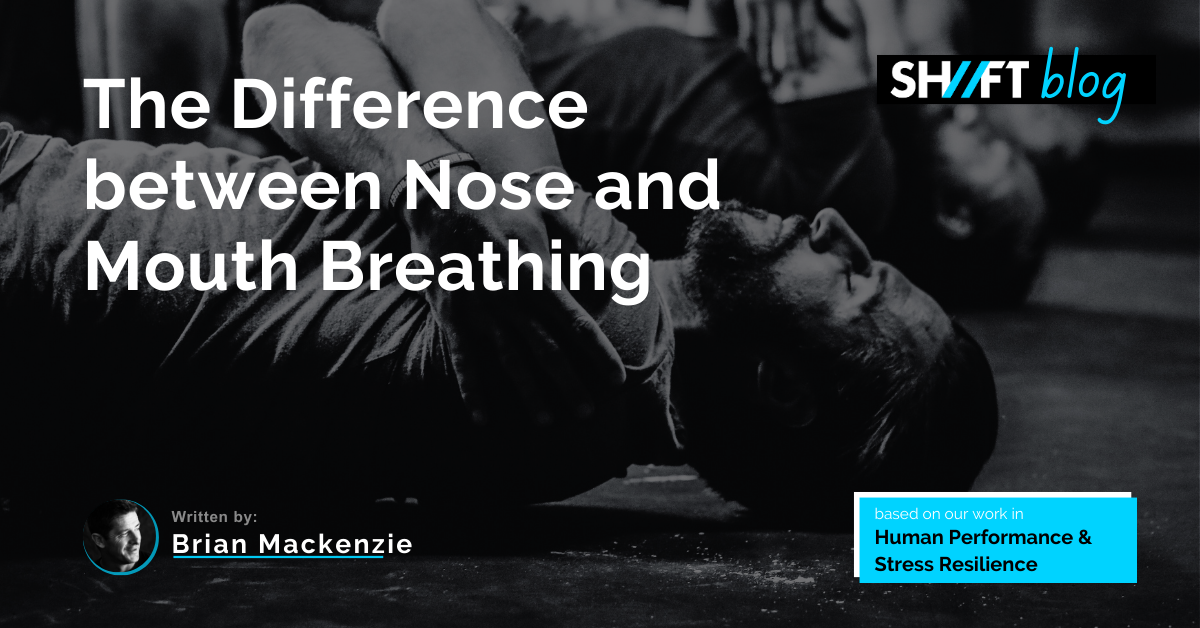The respiratory system was designed with the nose in mind and the mouth as a secondary option. The mouth was designed with the digestive system and our communication (vocal cords) in mind. While we could get incredibly granular on the efficacy of these statements and the crossover of many of these statements. Let’s look at lifestyle and stress, since they affect us all.
Our air is filled with molecules, particulates, bacteria, and viruses. Let’s look at how that air is filtered and changed for each of these.
Your Nose as a Filter
The nose has as many hairs (and cilia) follicles in it as there is hair on your head. Each of those hairs represents an obstacle. Every single hair/cilia is coated with mucus. Mucus is like chewing gum on a hot sidewalk. It is antiviral and antimicrobial; it is the first line of defense for the air we breathe and our immune system. I talk about our nose as a filter more in an article about why nose breathing is important.
Air passes by hair all the way through our turbinates, which represents one of the most intricate systems for filtering air (we can’t seem to replicate it) by spinning air in circles before it can pass up to the next turbinate and go through the same process. Air then enters the sinuses, where it is humidified and brought to a temperature safe for our defenseless lungs. The air then passes down the glottis and throat past the tonsils, the final phase of our air’s immune system defense.
Overcoming the Increased Resistance
All of this resistance slows down how much air we can bring in because that is what it is. That signals our more significant, more powerful primary breathing muscles to do the bulk, if not all, work when at rest. The process of inhaling brings in as much oxygen as does with the mouth, except at a slower rate. We exhale almost 80% of the oxygen we take in on an inhale via the nose or mouth. When exhaling through the nose, the air also comes out slower, but it also helps humidify the sinuses with the same air that went in so that when another breath is drawn in, it gets to repeat this process more effectively.
The caveat is when we exhale through the nose, we limit how carbon dioxide comes out, as it can’t escape as fast as it does via the mouth. This has biochemical tradeoffs, restricting oxygen use when excess carbon dioxide is exhaled consistently. The nose helps regulate pH better when below moderate levels of intensity and at rest.
We Have Options
The mouth acts as a means for moving more air faster, although its only defense is the tonsils, which are the final process for the air moving through the nose. This becomes important when we speak, as it changes biochemistry a bit to bring us into a more focused state. We rely more on faster energy sources and our sympathetic nervous system here. The other end is when we work harder, and biochemically, changes happen at the cellular level first. The end product increases not only carbon dioxide, but our pH gets more acidic. Making more air faster, almost a necessity. This comes in the right at about the moderate intensity level of exercise.
If you’re interested in learning some tips to breathe more efficiently during endurance activities, check out this article about managing your breath while running.
Conclusion
Both the nose and the mouth have their place, or they wouldn’t be there. Right? It can be a challenge at first to make some of the changes you may be thinking of. But you’ll probably appreciate these tradeoffs. If you’re interested in learning more about building your own breathing practice, look into our Breath Essentials plan included in All-Access. It covers 10 days of guided breath principles and practices to that support all skill levels.

